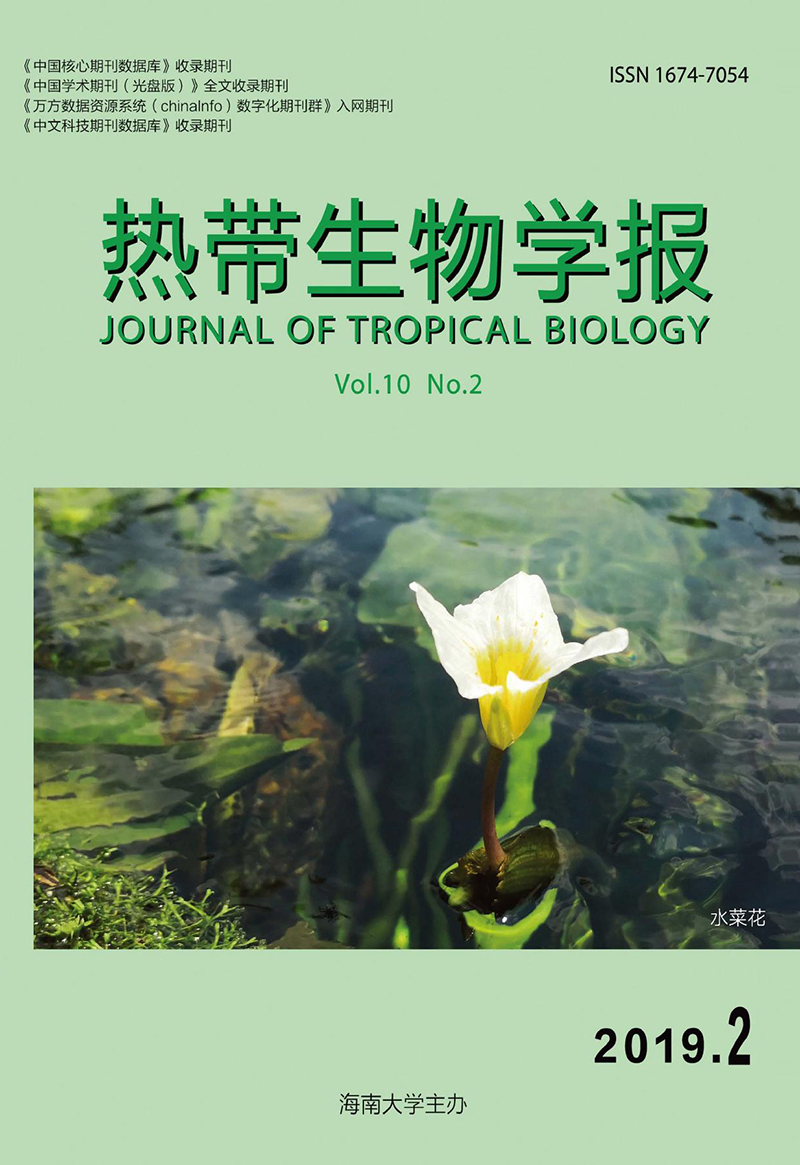|
[1]
|
黄洁, 李开绵, 叶剑秋, 等.中国木薯产业化的发展研究与对策[J].中国农业通报, 2006, 22 (5):421-426. |
|
[2]
|
李建勇, 龚继明.植物硝酸根信号感受与传导途径[J].植物生理学报, 2011, 47:111-118. |
|
[3]
|
朱兆良.农田中氮肥的损失与对策[J].土壤与环境, 2000, 9 (1):1-6. |
|
[4]
|
郭敏, 韩鹏飞.农业面源污染的成因及控制对策[J].河北农业科学, 2009, 13 (4):93-96. |
|
[5]
|
CRAWFORD N M, FORDE B G.Molecular and developmental biology of inorganic nitrogen nutrition[J].American Society of Plants Biologists, 2002:e0011. |
|
[6]
|
FORDE B G.Nitrate transporters in plants:structure, function and regulation[J].Biochimica et Biophysica Acta, 2000, 1465 (12):219-235. |
|
[7]
|
WILLIAMS L E, MILLER A J.Transporters responsible for the uptake and partitioning of nitrogenous solutes[J].Annual Review of Plant Physiology and Plant Molecular Biology, 2001, 52 (1):659-688. |
|
[8]
|
CRAWFORD N M, GLASS A D M.Molecular and physiological aspects of nitrate uptake in plants[J].Trends in Plant Science, 1998, 3 (10):389. |
|
[9]
|
CHAPMAN N, MILLER T.Nitrate transporters and root architecture//GEISLER M, VENEMA K.Transporters and pumps in plant signaling[M].Berlin:Springer, 201l:165-190. |
|
[10]
|
LEE R B, CLARKSON D T.Nitrogen-13 studies of nitrate fluxes in barley roots.Compartmental analysis from measurements of 13N efflux [J].The EMBO Journal, 1986 (5):1753-1767. |
|
[11]
|
TSAY Y F, CHU C C, TSAI C B, et al.Nitrate transporters and peptide transporters [J].FEBS Letters, 2001, 581:2290-2300. |
|
[12]
|
PAO S S, PAULSEN I T, SAIER M H.Major facilitator superfamily[J].Microbiologr and Molecular Biology Review, 1998, 62 (1):1-34. |
|
[13]
|
GLAVAN A, FERNANDEZ E.Eukaryotic nitrate and nitrite transporters[J].Cellular and Molecular Life Sciences, 2001, 58:225-233. |
|
[14]
|
TRUEMAN L J, RICHARDSON A, FORDE B G.Molecular cloning of higher plant homologues of the high-affinity nitrate transporters of Chlamydomonas reinhardtii[J].Gene, 1996, 175 (1/2):223-231. |
|
[15]
|
YAN M, FAN X R, FENG H M, et al.Rice OsNAR2.1 intersects with OsNRT2.1, OsNRT2.2 and OsNRT2.3 a nitrate transporters to provide uptake over high and low concentration ranges [J].Plant Cell and Environment, 2011, 34 (8):1360-1372. |
|
[16]
|
XU G, FAN X, MILLER A J.Plant nitrogen assimilation and use efficiency [J].Annual Review of Plant Biology, 2012, 63 (1):153-182. |
|
[17]
|
TANG Z, FAN X R, LI Q, et al.Knock down of a rice stellar nitrate transporter alters long distance translocation but not root influx [J].Plant Physiology, 2012, 160 (4):2052-2063. |
|
[18]
|
CRAWFORD N M, GLASS A D M.Molecular and physiological aspects of nitrate in plants[J].Trends in Plant Science, 1998, 3 (10):389-395. |
|
[19]
|
QUAGGIOTTI S, RUPERTI B, BORSA P, et al.Expression of a putative high-affinity NO3-transporter and of an H+-ATPase in relation to whole plant nitrate transport physiology in two maize genotypes differently responsive to low nitrogen availability[J].Journal of Experiment Botany, 2003, 54:1023-1031. |
|
[20]
|
AMARASINGHE B H, DE BRUXELLES G L, BRADDON M, et al.Regulation of Gmnrt2 expression and nitrate transport activity in roots of soybean (Glycine max) [J].Planta, 1998, 206 (1):44-52. |
|
[21]
|
赵学强, 李玉京, 刘建中, 等.小麦NO3-转运蛋白基因TaNRT2.3的克隆和表达分析[J].植物学报, 2004, 46 (3):347-354. |
|
[22]
|
NAZOA P, VIDMAR J J, TRANBARGER T J, et al.Regulation of the nitrate transporter gene AtNRT2.1 in Arabidopsis thaliana:responses to nitrate, amino acids and developmental stage[J].Plant Molecular Biology, 2003, 52:689-703. |
|
[23]
|
TODD C D, ZENG P, HUETE A M P, et al.Transcripts of MYB-like genes respond to phosphorous and nitrogen deprivation in Arabidopsis[J].Planta, 2004, 219:1003-1009. |
|
[24]
|
冯素花, 王丽鸳, 陈常颂, 等.茶树硝酸根转运蛋白基因NRT2.5的克隆及表达分析[J].茶业科学, 2014, 34 (4):364-370. |
|
[25]
|
王新亮.果树根系硝态氮信号响应关键基因的克隆与功能分析[D].泰安:山东农业大学, 2012. |
|
[26]
|
CAI C, ZHAO X Q, ZHU Y G, et al.Regulation of the high-affinity nitrate transport system in wheat roots by exogenous abscisic acid and glutamine[J].Journal of Integrative Plant Biology, 2007 (49):1719-1725. |
|
[27]
|
ARAKI R, HASEGAWA H.Expression of rice (Oryza sativa L.) genes involved in high-affinity nitrate transport during the period of nitrate induction[J].Breeding Science, 2006, 56:295-302. |
|
[28]
|
缪其松.水稻硝转运蛋白基因OsNRT1.1a和OsNRT1.1b的功能研究[D].南京:南京农业大学, 2011. |
|
[29]
|
胡春吉, 邹良平, 彭明.木薯MeNRT2.1基因的克隆及表达分析[J].热带作物学报, 2016, 37 (1):117-124. |
|
[30]
|
金玲.小白菜水培营养液配方筛选 [J].河南农业科学, 2007 (9):82-85. |
|
[31]
|
MO C, WAN S, XIA X, et al.Expression patterns and identified protein-protein interactions suggest that cassava CBL-CIPK signal networks function in response to abiotic stresses[J].Frontiers in Plant Science, 2018, 9:269. |
|
[32]
|
KIVAK K J, SCHMITTGEN T D.Analysis of relative gene expression data using real-time quantitative PCR and the 2-ΔΔCT method[J].Methods, 2001, 25 (4):402-408. |
|
[33]
|
LINA L, TAKATOSHI K, ANA-BELEN F B, et al.The Arabidopsis nitrate transporter NRT2.5 plays a role in nitrate acquisition and remobilization in nitrogen-starved plants [J].The Plant Journal, 2014, 80:230-241. |
|
[34]
|
LITTLE D Y, RAO H, OLIVA S, et al.The putative high-affinity nitrate transporter NRT2.1 represses lateral root initiation in response to nutritional cues[J].Proceedings of the National Academy of Science of United States of America, 2005, 102:13693-13698. |
|
[35]
|
孔敏, 杨学东, 侯喜林, 等.白菜NRT2基因的克隆及表达模式分析[J].园艺学报, 2011, 38 (12):2309-2316. |
|
[36]
|
ORSEL M, KRAPP A, DANIEL V.F.Analysis of the NRT2 nitrate transporter family in Arabidopsis:Structure and gene expression[J].Plant Physiology, 2002, 129 (2):886-896. |
|
[37]
|
MAYA K, GUILHEM D, WAFAA R, et al.The NRT2.5 and NRT2.6 genes are involved in growth promotion of Arabidopsis by the plant growth-promoting rhizobacterium (PGPR) strain Phyllobacterium brassicacearum STM196 [J].New Phytologist, 2013, 198:514-524. |
|
[38]
|
ZHOU J J, FERNÁNDEZ E, GALVÁN A, et al.A high affinity nitrate transport system from Chlamydomonas requires two gene products [J].FEBS Letter, 2000, 466 (2/3):225-227. |
|
[39]
|
TONG Y P, ZHOU J J, LI Z S, et al.A two-component high-affinity nitrate uptake system in barley[J].The Plant Journal, 2005, 41 (3):442-450. |
|
[40]
|
KOTUR Z, GLASS A D M.A 150 kDa plasma membrane complex of AtNRT2.5 and AtNAR2.1 is the major contributor to constitutive high-affinity nitrate influx in Arabidopsis thaliana[J].Plant, Cell and Environment, 2015, 38:1490-1502. |






 DownLoad:
DownLoad: